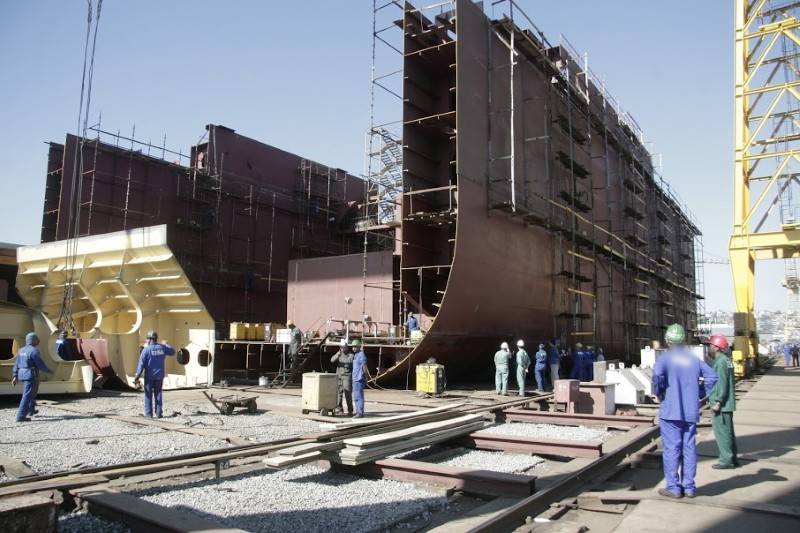
Currently, there are four FPSO-type platforms in operation in Búzios, which account for more than 20% of Petrobras' total production and more than 30% of the production of the pre-salt fields.
Petrobras informed yesterday (23/7) in a material fact that its Executive Board approved the start of contracting processes for three new FPSO-type platforms for the Búzios field, in the pre-salt of the Santos Basin. FPSO is the English acronym for the unit that produces, stores and transfers oil and gas. According to the ANP, decommissioning platforms can bring a sea of opportunities to our shipyards
Read also
- Local Content: With the new rule proposed by the ANP, 1,3 billion reais in fines can be converted into investments in the national industry
- Resumption of shipbuilding! Petrobras will again manufacture its own FPSO's and EBR shipyard is one of the pre-qualified
- Petrobras starts decommissioning the P-12 platform in the Campos Basin
- Justice of Sergipe gives ultimatum to Petrobras to end with sun coral on platforms in the state
The three new FPSO-type platforms will be the first to be contracted after the acquisition of excess volumes from the onerous assignment of the Búzios field, in November 2019, in partnership with the Chinese companies CNOOC Petroleum Brasil Ltda. (CNOOC) and CNODC Brasil Petróleo e Gás Ltda. (CNODC).
The acquisition of these additional volumes, for which Petrobras paid R$61,4 billion as a signing bonus, is the result of the company's active portfolio management.
The sale of assets that bring lower financial returns and that are not part of the company's core business makes resources available for investments in more promising projects with higher returns, as is the case of the Búzios field.
The FPSO-type platforms are part of the asset's Development Plan, which foresees a total of 12 units installed by the end of the decade. At the end of the development phase, the Búzios field, in the Santos Basin pre-salt, is expected to produce more than 2 million barrels of oil equivalent per day (boed), making it Petrobras' biggest asset, with higher production.
Currently, there are four units in operation in Búzios, which account for more than 20% of Petrobras' total production and more than 30% of the production of the pre-salt fields. On July 13, these platforms reached the field's production records of 674 barrels of oil per day (bpd) and 844 barrels of oil equivalent per day (boed).
A fifth platform, with a production capacity of 150 bpd of oil, is under construction. Named FPSO Almirante Barroso, production is scheduled to start in the second half of 2022.
New FPSO's platforms Petrobras
The first of the three new platforms to start operating will be the FPSO Almirante Tamandaré, the field's sixth production system, with start-up scheduled for the second half of 2024. The FPSO will be chartered and will have a daily processing capacity of 225 barrels of oil and 12 million m3 of gas. It will be the largest oil production unit operating on the Brazilian coast and one of the largest in the world.
The other two units will be contracted under the EPC modality (engineering, supply and construction contracting) and will have the capacity to process 180 barrels of oil and 7,2 million m3 of gas each day. These platforms are expected to start operating in 2025. Named P-78 and P-79, these units are the result of Petrobras' strategy to develop new projects for its own platforms, incorporating lessons learned from FPSOs already installed in the pre-salt layer. , including contracting and construction aspects.
Called the Reference Project, the studies carried out by the company consolidated this learning into an FPSO project for future contracts, which incorporates additional standardization of specifications and improvements in the market approach model, such as the reduction of interfaces, with the contracting of a single supplier in the EPC modality, responsible for all stages of the project; pre-qualification of suppliers; alignment of interests in the contract and better detailing of the basic project.
There are also technological incorporations in areas such as reservoirs, wells and the subsea system, with a focus on increasing the recovery factor, higher flows, cost reduction, safety and efficiency.
In addition to the platforms, Petrobras will also go to the market to hire wet Christmas trees (ANMs) – which are underwater equipment needed to control the flow of fluids produced or injected into wells -, rigs, well services and a subsea collection and export system. .
According to the Petrobras report, the expectation is that the contracting of FPSOs and ANMs will be concluded and the contracts signed in 2021. The other contracting will be carried out in the next 18 months. All hires will meet the local content levels required for the Búzios field.
Búzios oil field
Búzios, the largest oil field in deep waters in the world, is 180 km off the Brazilian coast and more than 5.000 meters deep. More than 45 wells drilled to date confirm the excellent quality of the reservoir.
Each well in Búzios produces, on average, more than 50 barrels of oil per day. Currently, the field has the six wells with the highest oil production in the country. The high productivity of the field justifies the installation of larger FPSOs.
According to Petrobras, the development of Búzios is in line with the company's strategic positioning, which focuses on world-class E&P assets, especially in the pre-salt layer. Búzios is Petrobras' best and most promising asset.
In March of this year, Petrobras signed the production sharing contract, with the CNOOC and CNODC as partners, and Pré-Sal Petróleo SA (PPSA) as manager.













And the battlefield, all that matters is victory...
"Friendly nation" I don't believe you can…
The potential of this research and…
There is already a language translation app…
Developed countries now need a helping hand…
I've never seen a website publish so much zucchini...
It must be sold to the Australians, nation…
Much better than playing a lot…